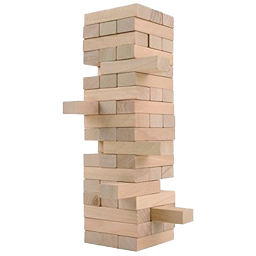
To begin with, let's admit that mind is magic. Not the slight-of-hand kind of magic that deceives and misdirects, but genuinely awesome, metaphysically sourced, magic. There is other magic in the universe, of course, but nothing quite like mind. After all, what is life for us if not a stream of consciousness, an unfolding sequence of one experience following another, keeping us company as we travel along life's ever-changing road?
Mind's magical repertoire extends well beyond its famous consciousness caper. Perhaps most baffling, it somehow manages two-way communication with our machine-like body. How does it do that? How does an insubstantial thought find its way into a physical action? Or vice versa?
This is the story of mind. I've made an effort to keep it as straightforward as possible, painting the picture with a soft, broad brush. Still, don't sweat the details too much, we can save those for another day. For now, let's frame what follows as a hopefully interesting "what if" about how things might be, an "Alice in Wonderland" of whimsy on the nature of mind and reality. With that...
One way to understand something is to discover its recipe – the ingredients and processes that create it. We think dirt, water, and apples, for example, are all cooked up from subatomic particles put together in different interesting ways. These particles are both material (they have mass) and immaterial (they have electromagnetic fields). We can think of them as a kind of "precursor to" or "proto" apple, because they are the stuff from which apples are made, even though we can't detect specific appleness in any isolated subatomic particle. Subatomic particles are exceedingly small, but by combining them, large and complex physical structures are created. In our story, mind, too, is built up from very small units, little bits of experience called "sprites". A sprite is a "proto" mind in that it is the stuff from which mind is made, even though we cannot detect mind in any simple sprite. Like subatomic particles, the simplest sprite is also exceedingly small, but there is no limit to the complexity or size a sprite might reach. So it is that we seem to have two different kinds of stuff populating our universe: subatomic particles creating its physical aspects, sprites creating the experiential.
If mind and body are two different kinds of stuff, how do they interact? Must there not be some sort of common ground in which they come together to do business? It seems like mind and body are different kinds of stuff, but appearances can be deceiving. That's because we do not directly perceive reality, we only perceive its shadows, or projections. Imagine that a solid cylinder exists in reality. It casts two different shadows, both of which we can perceive. The square shadow represents an electromagnetic aspect, the circle shadow represents the sprite. It may seem to us that electromagnetic and sprite fields are separate, independent, things. But in reality, they have a common origin.
To inspect the common ground where mind and body co-exist, we might peer inside the brain. On the input side of a typical cortical neuron we find the dendritic tree, so called because of its extensively branching surface. The dendritic tree receives inputs via numerous synaptic sources. These stimulations vary in time, intensity, and location. As a result, a dynamic electromagnetic field, EMF, is created throughout the dendritic region. As an EMF takes shape, so, too, does a sprite field. The "shape" of a sprite field is the quality of its experience. For example, a specific sprite structure corresponds to an experience of a small green light located straight ahead in the visual field. Sprites are analogous to subatomic particles: different arrangements of subatomic particles constitute different types of matter; different shapes of complex sprites constitute different types of experience. As sprites are arranged in larger, more complex shapes the quality of their experiences change, often with new features emerging. New features like consciousness.
Sprites are field phenomena. Like other immaterial fields, sprites happily share the same physical spaces. A sprite originating in, say, the visual cortex will spread throughout the entire brain. The same holds for all the sprite fields in the brain. That means that sprite fields corresponding to parts of an over-all perception will stack across the cortex. This overlapping of sprite fields may well contribute to the appearance of unity, i.e., our over-all perception seems unified. At the same time, none of the layers of overlapping fields lose their identity, they do not actually mix, disappearing into a kind of faceless crowd.
Consider the following example. In the visual scene before you, in an otherwise dark room, there is a small green light off to the right and a small red light off to the left. The "small green light" experience corresponds to a cortical sprite field centered at a specific location, and extending throughout the cortex. At every point of this sprite field, the corresponding experience is the same: a small green light with a specific visual address (location) within an over-all visual field. The "small red light" experience has a different address (location) but also is present throughout the cortex in the same manner. The metaphorical "shapes" of both sprite fields assign addresses for the two lights within the same visual field, creating a perceptual unity, a single visual experience. Note: if two sprite fields have an identical shape feature, the experience corresponding to that feature will be the same. In this case that means two sprite fields creating the same over-all visual field perception but different red and green light locations. This is a very simple example to illustrate how sprite fields contribute to a unified perception by sharing similar features.
Our story has illustrated how the universe can be divided into physical and experiential domains. Each aspect seems to have its own fundamental building blocks from which higher-order, more complex structures are crafted. We think of subatomic particles as building mountains and apples; their companion sprites building life and mind. But it turns out that physical and experiential aspects are projections from the same source. Their seemingly independent existences are not independent at all, they are firmly connected in the electromagnetic and sprite field common source. And a common source means that the mind-body connection cannot be avoided. The infamous mind-body problem has only been a problem in our imagination. Mind and brain are biffers (best friends forever), joined at the hip.
It's complicated, our narrative has glossed over almost countless issues and implications in order to present a simplified first look at mind's place in reality. Even so, there's more than enough to digest here. We begin to unpack some of those issues in our next thrilling episode of "The Ghost Who Lives in the Machine."
